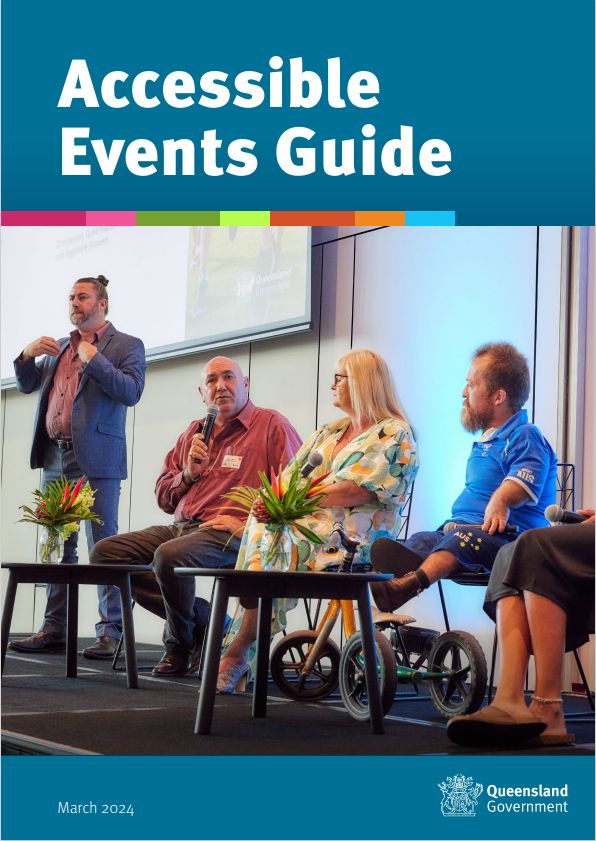The three minute video from Instagram below is a speedy run-through of the site features that make the place accessible and inclusive. No rocket science here, but some good products. Ability Fest is for everyone – it is not a “Disability Fest”. That is the one problem of using the term “ability” when really meaning inclusive.
Dylan Alcott loves music festivals but they make it almost impossible for people with disability to enjoy them. Hence his Ability Fest project.

The following videos are an education for all major event managers. Alcott showcases all the different features that make events accessible and inclusive.
In the next video, Alcott explains the background to making an accessible festival.
In the following video, the event manager explains the planning and the features required.
A longer interview with Dylan Alcott where he provides his personal motivation for the events, and covers how they cater for different disabilities. He makes a good point when addressing access and inclusion. He says that accessibility and inclusion are two different things, but you need both – one is no good without the other. The video is 17 minutes but you can cut to the chase at 4 minutes.
The detail provided in these videos makes it easy for event and festival managers to make all their events inclusive and accessible. Ability Fest is not a “special” disability event – it is for everyone. At last you can take your friend with a disability with you to a festival. Alcott hopes to make his job redundant because all festivals will be accessible and inclusive.
See also the section on inclusive and accessible events on this website.
Universal design at a food festival
This research has a paywall but the abstract is available. The title of the paper is, Constraints and Facilitators, Universal Design and Event Experience: Accessibility of Facilities at a Food Festival.
Accessibility barriers in festivals inhibit engaging festival experiences for the general public. This study aimed to examine the accessibility of facilities at the Macau Food Festival (MFF) by applying the theories of leisure constraints and facilitators, leisure negotiation and universal design principles.

Participant observation and qualitative semi-structured interviews with 25 festival participants were conducted. Findings revealed mixed perceptions of the facilities. Several aspects such as unclear festival layout and insufficient toilets were contrary to universal design principles and constrained visitors’ engagement. However, online payment devices and shuttle buses facilitated festival engagement.
Accessibility played an important role in influencing visitors’ experiences and behavioural outcomes such as revisit intention, word-of-mouth, and leisure negotiation strategies. This study provides a new approach for evaluating the accessibility of facilities in food festivals. Practical implications regarding accessibility of festival and event facilities are suggested along with numerous avenues for future research.
Festivals and markets for everyone
Organisers of festivals, markets and events need to think about accessibility and inclusion in their planning. Ordering an accessible Portaloo doesn’t suddenly make the event accessible. The layout of stalls and entertainment areas also need to be considered.
Lee Wilson makes a plea to organisers of festivals and markets for more inclusive thinking in his post on Linked In. He gives an overview of things to think about and that includes emergency procedures.

Information should also be accessible, particularly to people who do not read English well, or have low vision. Auslan interpreters and audio describers make festivals and events enjoyable for people who are deaf or blind. There are several good resources on making events inclusive:
Accessible Events Checklist from the WA Government
Accessible Events Guide from Meetings and Events Australia
The City of Sydney’s Vivid Festivals have a high level of accessibility which is planned from the outset
.















 Virtual and hybrid conferences have become more popular since the advent of the recent pandemic. But are they accessible and inclusive? A paper from Canada addresses the issues of inclusive online conferences. Using the recent Parks Accessibility Conference as a case study, the authors describe their experiences. As a Canadian event, they also had to consider two languages in their planning.
Virtual and hybrid conferences have become more popular since the advent of the recent pandemic. But are they accessible and inclusive? A paper from Canada addresses the issues of inclusive online conferences. Using the recent Parks Accessibility Conference as a case study, the authors describe their experiences. As a Canadian event, they also had to consider two languages in their planning.  See a separate paper,
See a separate paper, 

 The art of audio describing has improved considerably since it was first trialled some sixteen or so years ago. Australian produced television programs signal when a program is audio described with a distinct sound. And more movies and stage shows are offering this option. Audio describing (AD) is designed for people with vision impairment, but could sighted people benefit too?
The art of audio describing has improved considerably since it was first trialled some sixteen or so years ago. Australian produced television programs signal when a program is audio described with a distinct sound. And more movies and stage shows are offering this option. Audio describing (AD) is designed for people with vision impairment, but could sighted people benefit too? 
 If designs are not “born” accessible then it becomes a process of finding “work-arounds”. It can be seen in tacked-on ramps or clumsy platform lifts in buildings. Revolving doors mean another separate door for wheelchair and pram users. Special captioning apps or screenings in cinemas, and “special accommodations” at work and at school. It takes a change of culture to think inclusively and to understand its value.
If designs are not “born” accessible then it becomes a process of finding “work-arounds”. It can be seen in tacked-on ramps or clumsy platform lifts in buildings. Revolving doors mean another separate door for wheelchair and pram users. Special captioning apps or screenings in cinemas, and “special accommodations” at work and at school. It takes a change of culture to think inclusively and to understand its value.